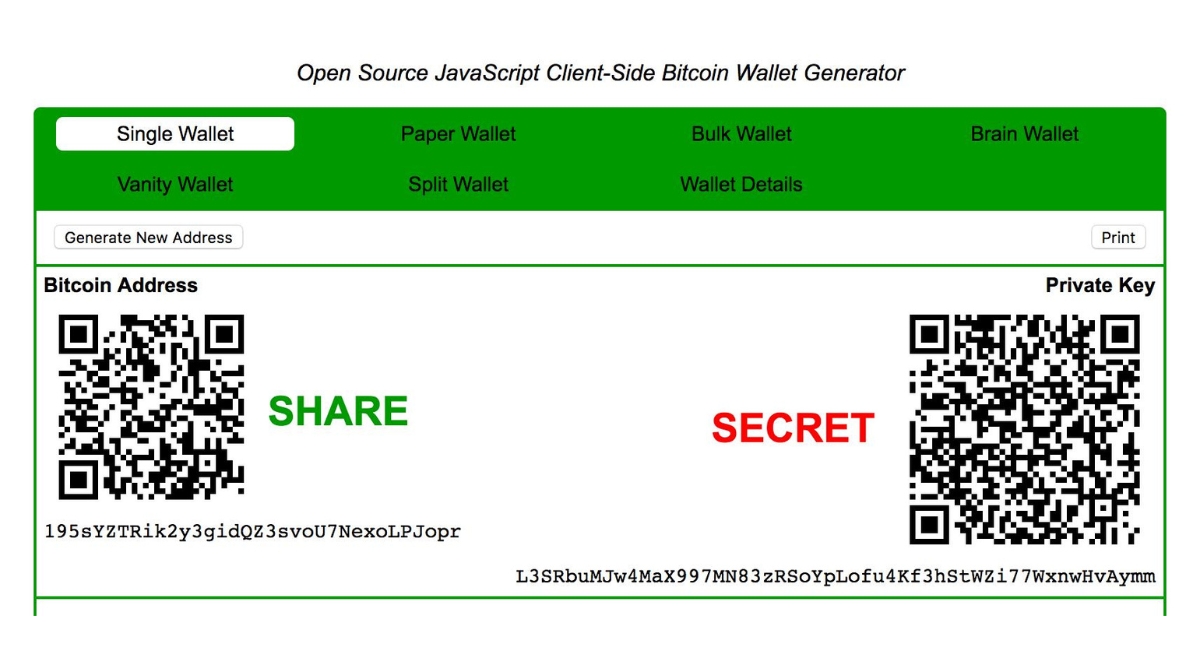Introduction
Bitcoin, the first-ever decentralized cryptocurrency, has revolutionized the world of finance and digital transactions. Since its introduction in 2009 by the elusive Satoshi Nakamoto, Bitcoin has gained immense popularity and sparked a global craze. But have you ever wondered how exactly Bitcoin is created?
Unlike traditional currencies issued by central banks, Bitcoin is not printed or minted. Instead, it is generated through a process called “mining.” This innovative approach not only ensures the decentralization and security of the network but also incentivizes individuals to contribute computing power to maintain the Bitcoin ecosystem.
In this article, we will delve into the fascinating world of Bitcoin creation, exploring the concept of mining, the role of miners, and the factors that influence the process. By understanding the intricacies of Bitcoin’s creation, you will gain a deeper appreciation for this groundbreaking technology.
So, let’s embark on a journey to uncover the mystery behind the creation of Bitcoin and unravel the complex process that powers the world’s most popular cryptocurrency.
Initial Development of Bitcoin
The story of Bitcoin’s creation begins with a whitepaper published in 2008 by an individual or group using the pseudonym Satoshi Nakamoto. This revolutionary paper titled “Bitcoin: A Peer-to-Peer Electronic Cash System” outlined the principles and mechanisms behind this new digital currency.
The key problem Bitcoin aimed to solve was the issue of trust in traditional financial systems. Satoshi Nakamoto envisioned a decentralized currency that would enable peer-to-peer transactions without the need for intermediaries like banks or governments. By utilizing cryptographic techniques, Bitcoin offered a secure and transparent method of transferring value across the internet.
In January 2009, Nakamoto mined the first-ever Bitcoin block, known as the “genesis block.” This marked the official launch of the Bitcoin network and the beginning of Bitcoin’s creation. It also embedded a message referencing the financial crisis: “The Times 03/Jan/2009 Chancellor on brink of second bailout for banks.” This message highlighted the motivation behind Bitcoin’s creation, seeking to provide an alternative to the centralized banking system.
During its early stages, Bitcoin attracted a small community of enthusiasts who shared Nakamoto’s vision of a decentralized currency. They actively participated in mining and promoting Bitcoin, gradually expanding its user base. The open-source nature of the project allowed others to contribute to its development and improvements. Over time, the Bitcoin network evolved, becoming more robust and secure.
As the Bitcoin community grew, so did the interest from outside parties. Bitcoin’s decentralized nature and the ability to facilitate peer-to-peer transactions without intermediaries appealed to individuals and businesses alike. This increased adoption bolstered Bitcoin’s value and solidified its position as the leading cryptocurrency.
Since its inception, Bitcoin has gone through various phases of development and witnessed significant milestones. From its humble beginnings as an experimental idea to a global financial phenomenon, Bitcoin continues to shape the world of digital finance.
In the next section, we’ll delve into the intricate process of Bitcoin mining, which is crucial for the creation and maintenance of the cryptocurrency network.
Bitcoin Mining
Bitcoin mining is the process by which new Bitcoins are created and transactions are verified and added to the blockchain, a public ledger that records all Bitcoin transactions. It is a complex computational process that requires powerful hardware and significant energy consumption.
The underlying concept behind Bitcoin mining is the idea of “proof of work.” In order to add a new block of transactions to the blockchain, miners must solve a complex mathematical puzzle. This is done through a trial and error process that involves hashing algorithms and finding a specific value, called a “nonce,” that produces a hash below a certain target value.
Mining, however, is far from a solitary endeavor. Miners compete against each other to solve the puzzle and be the first to validate a block of transactions. This is achieved by continuously processing and validating transactions, so only the most recent and valid transactions are included in the blockchain. The miner who successfully solves the puzzle and validates the block is rewarded with newly created Bitcoins and transaction fees.
The role of miners extends beyond just creating new Bitcoins. They play a crucial part in maintaining the security and integrity of the Bitcoin network. By validating transactions, miners ensure that double-spending is prevented, meaning that a user cannot spend the same Bitcoin more than once. This decentralized verification process is essential for the trustworthiness of the network.
Bitcoin’s mining process is designed to be resource-intensive and time-consuming. This serves two key purposes: it ensures the security and robustness of the network, as well as controls the rate at which new Bitcoins are created. The difficulty of the mining puzzle is adjusted regularly to maintain a consistent rate of block validation, regardless of changes in the mining power of the network.
It’s important to note that the Bitcoin mining industry has evolved significantly over the years. What initially could be done with a regular computer CPU is now handled by specialized hardware known as ASICs (Application-Specific Integrated Circuits), which are specifically designed for Bitcoin mining. This has resulted in an arms race among miners, with more powerful and efficient mining rigs constantly being developed and deployed.
In the next section, we’ll explore the rewards that miners receive for their efforts and the mechanism behind the creation of new Bitcoins.
Proof of Work
Proof of Work (PoW) is a consensus mechanism used by the Bitcoin network to validate transactions and create new blocks. It is a fundamental component of the blockchain technology that ensures the security, integrity, and decentralization of the Bitcoin network.
The concept of PoW revolves around solving a complex mathematical puzzle, requiring computational power and energy consumption. The puzzle is designed to be difficult to solve but easy to verify once a solution is found. This asymmetry ensures that the process of creating new blocks is time-intensive and resource-dependent, thereby preventing malicious actors from easily manipulating or corrupting the blockchain.
When a miner wants to add a new block to the blockchain, they must find a solution to the PoW puzzle. This involves repeatedly hashing the block’s data and a randomly generated number, called a nonce, until a hash with specific properties is found. The properties often include having a certain number of zeros at the beginning of the hash, which determines the difficulty of the puzzle.
Once a miner finds the solution, they broadcast it to the network, along with the block of transactions they have validated. Other miners can then quickly verify the solution, ensuring that the block satisfies the PoW criteria. If it does, the block is added to the blockchain, and the miner is rewarded with newly-created Bitcoins and transaction fees.
The key advantage of PoW is its resistance to attack. To tamper with the blockchain, an attacker would need to possess computational power greater than the combined power of the entire network. This makes the network highly secure, as any attempt to alter previously validated blocks would require an immense amount of computational resources. Furthermore, PoW ensures that the network remains decentralized, as no single entity can monopolize the mining process.
However, PoW does come with some drawbacks. The computational requirements and energy consumption associated with mining Bitcoin have raised concerns about its environmental impact. Miners use substantial amounts of electricity to power their hardware and keep it cool. As a result, there have been efforts to explore alternative consensus mechanisms that are more energy-efficient, such as Proof of Stake (PoS).
In summary, Proof of Work is a vital mechanism that underpins the security and decentralization of the Bitcoin network. By solving complex puzzles, miners contribute to the validation of transactions and the creation of new blocks, ensuring the smooth functioning of the Bitcoin ecosystem.
Mining Process
The mining process for Bitcoin involves numerous steps and requires specialized hardware and software. Let’s take a closer look at the different stages of the mining process:
- Connecting to the Bitcoin Network: Miners need to connect their mining equipment to the Bitcoin network. This is typically done by running a mining software that communicates with other nodes in the network.
- Collecting Transactions: Miners gather transactions from the network and compile them into a block. These transactions are usually chosen based on the transaction fees attached to them, as miners are incentivized to prioritize transactions that offer higher fees.
- Verifying Transactions: Before adding transactions to a block, miners need to verify the validity of each transaction. This involves checking if the sender has sufficient funds, if the signature is valid, and if the transaction adheres to the network’s rules.
- Data Hashing: Once the transactions are verified, miners combine them with other block data, such as the previous block’s hash, the timestamp, and a nonce. They then hash this data using a cryptographic algorithm (typically SHA-256), creating a unique block hash.
- Finding the Nonce: Miners must find a specific nonce value that, when hashed along with the block data, produces a hash that meets the criteria set by the network’s difficulty level. This involves a trial-and-error process, as miners increment the nonce value and rehash the data until a suitable hash is found.
- Submitting the Solution: Once a suitable hash is discovered, the miner broadcasts their solution to the network, along with the block of transactions and the nonce value. Other miners can quickly verify the solution by checking if the hash meets the difficulty criteria.
- Block Validation and Reward: If the solution is valid, the miner’s block is added to the blockchain, and they receive a reward in the form of newly created Bitcoins. Additionally, they collect any transaction fees associated with the transactions included in the block.
- Continuing the Process: Once a block is added to the blockchain, miners move on to the next block by repeating the entire process. This ongoing cycle ensures the continuous validation and creation of new blocks, maintaining the integrity of the Bitcoin network.
It’s important to note that the mining process requires substantial computational power and energy consumption. Miners invest in powerful hardware, such as ASICs (Application-Specific Integrated Circuits), to compete effectively and increase their chances of successfully mining a block. Additionally, mining is a highly competitive industry, as miners strive to find solutions faster than their counterparts to maximize their rewards.
As the Bitcoin network continues to grow, the mining process becomes increasingly challenging. The network’s difficulty level adjusts every 2016 blocks (approximately every two weeks) to ensure that the average time to find a solution remains around 10 minutes. This ensures a consistent rate of block validation, regardless of changes in the overall mining power of the network.
In the next section, we’ll explore the role of miners in the Bitcoin ecosystem and the rewards they receive for their efforts.
The Role of Miners
Miners play a crucial role in the Bitcoin ecosystem, contributing to the creation of new Bitcoins, verifying transactions, and maintaining the security and integrity of the network. Let’s explore the key responsibilities and functions of miners:
Transaction Verification: Miners are responsible for validating the transactions that are included in each block. They check if the sender has sufficient funds, if the transaction signature is valid, and if the transaction follows the consensus rules of the network. By verifying transactions, miners prevent double-spending and ensure the authenticity and integrity of the Bitcoin network.
Block Creation and Validation: Miners are the ones who compile verified transactions into blocks. They combine these transactions with other block data, such as the previous block’s hash, timestamp, and a nonce, and then hash the data to find a suitable solution to the proof-of-work puzzle. This process requires computational power and energy consumption. Once a valid solution is found, miners broadcast the block to the network, and other miners verify and add it to the blockchain.
Securing the Network: Through their participation in the mining process, miners contribute to the security and decentralization of the Bitcoin network. The proof-of-work mechanism ensures that miners must dedicate computational resources and solve complex puzzles to add new blocks. This makes it difficult for malicious actors to manipulate the blockchain, as they would need to possess a majority of the network’s mining power, known as a 51% attack, which is highly unlikely given the decentralized nature of the network.
Consensus Maintenance: Miners play a vital role in achieving consensus within the Bitcoin network. Through their mining efforts, they contribute to the creation of a shared blockchain that all participants agree upon. The longest and most difficult chain is considered the valid one, ensuring that everyone has a consistent view of the transaction history.
Network Improvement and Upgrades: Miners are actively involved in the Bitcoin community and contribute to its development. They participate in discussions about potential upgrades to the protocol, propose improvements, and may even choose to support or reject proposed changes through their mining power. This democratic process helps the Bitcoin network adapt and evolve over time.
Economic Incentives: In addition to their vital role in maintaining the network, miners are rewarded for their efforts. When a miner successfully adds a block to the blockchain, they receive a block reward in the form of newly created Bitcoins. This reward serves as an incentive for miners to continue dedicating computational power to secure the network. Furthermore, miners also collect transaction fees from the transactions included in the blocks they mine.
Without miners, the Bitcoin network would not function as intended. Their effort, computational power, and dedication ensure the creation of new Bitcoins, the verification of transactions, and the overall security and integrity of the entire system.
In the next section, we will explore the concept of block rewards and how the number of Bitcoins created through mining is controlled.
Block Reward
Block rewards are the incentives given to miners for successfully adding a new block to the Bitcoin blockchain. These rewards serve as a means of compensating miners for their computational power, energy consumption, and the overall security they contribute to the network.
Initially, when Bitcoin was first introduced, the block reward was set at 50 Bitcoins per block. However, as part of the design of Bitcoin, the block reward undergoes a programmed halving event approximately every four years. This event is known as the “Bitcoin Halving.
The first Bitcoin Halving occurred in 2012, reducing the block reward from 50 Bitcoins to 25 Bitcoins. The second halving occurred in 2016, reducing the reward to 12.5 Bitcoins. The most recent halving took place in May 2020, reducing the block reward to 6.25 Bitcoins per block.
The purpose of the Bitcoin Halving is twofold. Firstly, it aims to control the rate at which new Bitcoins are created, thus preventing the rapid inflation of the cryptocurrency. By reducing the block reward over time, the total supply of Bitcoins is gradually limited, reaching a maximum cap of 21 million Bitcoins.
Secondly, the halving event serves to create a sense of scarcity and value within the Bitcoin ecosystem. By reducing the reward for mining, miners have a greater incentive to hold onto their earned Bitcoins or sell them at a higher price.
In addition to the block reward, miners also collect transaction fees associated with the transactions included in the block they mine. Transaction fees, unlike the block reward, are not fixed and vary depending on the demand for Bitcoin transactions at any given time. As the number of Bitcoin transactions increases, so does the total transaction fee value, providing an additional bonus to miners.
It’s important to note that the reduction in block rewards impacts the profitability of mining for individual miners. As the block reward decreases, miners must rely more on transaction fees to cover their expenses and maintain profitability. This has led to increased competition among miners and the need for more efficient mining hardware to remain competitive.
The block reward system not only provides economic incentives for miners but also ensures the ongoing validation and security of the Bitcoin network. As the reward decreases, miners continue to play a critical role in securing the network through their computational power and commitment.
In the next section, we will explore the concept of the difficulty level in Bitcoin mining and how it adjusts to maintain a consistent block validation rate.
Halving
The Bitcoin halving is a significant event that occurs approximately every four years and has a profound impact on the Bitcoin ecosystem. During each halving, the block reward earned by miners is reduced by half. This event is programmed into the Bitcoin protocol and plays a crucial role in controlling the issuance of new Bitcoins and maintaining the scarcity of the cryptocurrency.
When Bitcoin was first introduced in 2009, the block reward was set at 50 Bitcoins. However, in 2012, the first halving event took place, reducing the block reward to 25 Bitcoins. This was followed by the second halving in 2016, which further cut the reward to 12.5 Bitcoins. In May 2020, the most recent halving occurred, reducing the block reward once again to 6.25 Bitcoins.
The primary purpose of the halving is to control the rate at which new Bitcoins are introduced into circulation. By reducing the block reward, the halving slows down the rate of Bitcoin issuance, making it more scarce over time. This scarcity is a key factor contributing to Bitcoin’s value proposition as a deflationary digital asset.
With each halving, the number of new Bitcoins created through mining decreases significantly. Over time, this reduction in supply creates an environment where the demand for Bitcoin could potentially exceed the available supply, which historically has led to price increases. Consequently, the halving events are often associated with heightened anticipation and speculation in the cryptocurrency market.
The predictable nature of the halving also brings stability and predictability to the Bitcoin network. Miners and other participants can plan ahead and adjust their strategies based on the scheduled reward reductions. It encourages long-term thinking and reduces the potential for sudden influxes of new Bitcoins into the market.
While the halving has a direct impact on miner rewards, it also affects the broader Bitcoin ecosystem. The reduced block rewards incentivize miners to rely more heavily on transaction fees to cover their expenses. This, in turn, can lead to increased competition among miners and may drive the adoption of more efficient mining methods and hardware.
Furthermore, the halving event has implications beyond miners and investors. It serves as a reminder of Bitcoin’s fundamental principles, emphasizing its decentralized nature and limited supply. The halving events often generate increased media attention, bringing awareness to Bitcoin and cryptocurrencies as a whole.
The next halving is scheduled to occur in 2024, when the block reward will be further reduced to 3.125 Bitcoins per block. As the number of halvings continues, the issuance of new Bitcoins will asymptotically approach zero, reaching the maximum supply of 21 million Bitcoins.
In summary, the halving is a key aspect of Bitcoin’s monetary policy, reducing miner rewards and controlling the rate of new Bitcoin issuance. It contributes to Bitcoin’s scarcity, market dynamics, and long-term value proposition.
Difficulty Level
The difficulty level in Bitcoin mining plays a crucial role in maintaining the consistency and security of the network. As more miners join the network and computational power increases, the difficulty level adjusts to ensure that blocks are validated at a regular and predictable pace.
The difficulty level is a measure of how difficult it is to find a suitable hash that satisfies the criteria set by the Bitcoin protocol. The difficulty is targetted to adjust every 2016 blocks, which is approximately every two weeks, based on the total computational power of the network. The goal of this adjustment is to maintain an average block solution time of approximately 10 minutes.
When there are more miners and computational power in the network, the difficulty level increases. This adjustment prevents blocks from being solved too quickly and ensures that new blocks are added to the blockchain at a consistent rate. Similarly, if some miners drop out of the network, the difficulty level decreases to compensate for the decrease in computational power.
The adjustment of the difficulty level is done through a process known as the Difficulty Adjustment Algorithm (DAA). The DAA calculates the new difficulty level based on the average time it took to find the previous 2016 blocks. If the average time was less than 10 minutes, indicating a high computational power, the difficulty is increased. If the average time was more than 10 minutes, indicating a lower computational power, the difficulty is decreased.
This dynamic adjustment mechanism is essential for maintaining the stability and integrity of the Bitcoin network. It helps ensure that blocks are added consistently, preventing rapid increases or decreases in the block validation rate. Ultimately, this helps maintain the security and predictability of the Bitcoin ecosystem.
The difficulty adjustment also has implications for miners. When the difficulty level increases, miners need more computational power to solve the proof-of-work puzzle and earn block rewards. Conversely, when the difficulty level decreases, it becomes easier to find suitable hashes, which can attract more miners to the network.
It’s worth noting that the increasing difficulty level over time is partly responsible for the arms race in mining hardware. As the difficulty rises, miners must upgrade their equipment to keep up with the competition and maintain profitability. This has led to the development of specialized mining hardware, such as ASICs (Application-Specific Integrated Circuits), which are designed solely for mining purposes.
The difficulty level adjustment mechanism ensures that Bitcoin mining remains efficient and secure, allowing the network to adapt to changes in computational power over time. It strikes a delicate balance between the rate of new block validation and the computational resources of the network, contributing to the overall stability and functioning of the Bitcoin ecosystem.
In the next section, we will explore the concept of the Bitcoin creation limit and the implications it has for the future of the cryptocurrency.
Bitcoin Creation Limit
One of the unique features of Bitcoin is its limited supply. Unlike traditional currencies that can be printed or minted at will, Bitcoin has a predefined creation limit. The maximum number of Bitcoins that will ever exist is set at 21 million.
This limit was built into the Bitcoin protocol by its creator, Satoshi Nakamoto, as a way to ensure scarcity and protect the value of the cryptocurrency. By capping the total supply, Bitcoin aims to prevent inflation and maintain its status as a deflationary digital asset.
As of now, approximately 18.6 million Bitcoins have been mined, leaving around 2.4 million yet to be created. The process of Bitcoin creation occurs through mining, where miners compete to solve complex mathematical puzzles and add blocks to the blockchain.
At the initial stage of Bitcoin’s creation, the block reward for miners was set at 50 Bitcoins per block. However, due to the programmed halving events that occur approximately every four years, the block reward reduces by half. This reduction in block reward acts as a mechanism to control the rate of Bitcoin issuance and ensure that new coins are gradually introduced into the ecosystem.
When all 21 million Bitcoins are mined, no more new Bitcoins will be generated. The issuance of new coins will come to a complete halt. This event is projected to occur in the year 2140 or thereabouts, considering the average block validation time of 10 minutes.
The finite supply of Bitcoin has several implications. First and foremost, it adds to Bitcoin’s perceived value. The scarcity and the fact that no more Bitcoins can be created after the creation limit is reached create a sense of rarity, which, in turn, can drive demand and potentially increase the price.
Furthermore, the limited supply of Bitcoin may make it a hedge against inflation. In traditional fiat currencies, central banks can increase the money supply at will, leading to debasement and devaluation over time. With Bitcoin’s finite supply, it is not subject to the same inflationary pressures, making it an appealing store of value for those seeking a hedge against inflationary risks.
While the creation limit ensures scarcity, it also presents challenges. As the supply of newly minted Bitcoins decreases over time, miners will need to rely more heavily on transaction fees to sustain their operations. This may increase competition among miners and drive the development of more efficient mining technologies.
In summary, Bitcoin’s creation limit of 21 million ensures scarcity, protects against inflation, and adds to its perceived value. The limited supply is a fundamental aspect of Bitcoin’s design, helping to maintain the cryptocurrency’s deflationary nature and positioning it as a potentially valuable store of value in the long term.
Energy Consumption
Bitcoin mining is a resource-intensive process that requires significant computational power, and as a result, it consumes a substantial amount of energy. The energy consumption of the Bitcoin network has been a topic of debate, with concerns being raised about its environmental impact.
The high energy consumption in Bitcoin mining is primarily attributed to the proof-of-work (PoW) consensus mechanism. Miners must solve complex mathematical puzzles and perform numerous computational calculations to find a valid block solution. As the network has grown and the mining difficulty has increased, miners now rely on specialized hardware, such as ASICs (Application-Specific Integrated Circuits), which consume considerable amounts of electricity.
Estimating the precise energy consumption of the Bitcoin network is challenging due to various factors, such as the decentralized nature of mining, the varying energy sources used by miners, and the evolving hardware efficiency. However, studies have attempted to estimate the energy usage with varying results.
According to the Cambridge Centre for Alternative Finance, the annualized energy consumption of the Bitcoin network was around 110 terawatt-hours (TWh) as of May 2021. This figure is comparable to the energy consumption of entire countries, highlighting the significant impact of Bitcoin mining on global energy consumption.
However, it is essential to consider the context and perspective when assessing the environmental impact of Bitcoin’s energy consumption. Some argue that the energy usage is justified by the network’s benefits, such as providing a secure and decentralized financial system, and its potential to disrupt traditional financial systems. Additionally, critics argue that the energy consumption of traditional banking and financial systems should also be taken into account for a fair comparison.
Efforts are being made to address and mitigate the energy consumption concerns associated with Bitcoin mining. One approach is the exploration of alternative consensus mechanisms that are less energy-intensive than PoW. Some cryptocurrencies, like Ethereum, are transitioning from PoW to Proof of Stake (PoS), which requires validators to hold and lock up a certain amount of cryptocurrency instead of performing computational work. PoS has the potential to significantly reduce energy consumption in blockchain networks.
Despite the energy-intensive nature, there have been initiatives to incorporate renewable energy sources into Bitcoin mining. Some mining operations are being set up near renewable energy sources, such as hydroelectric or solar power, to reduce the carbon footprint of the mining process.
Furthermore, technological advancements and more energy-efficient mining hardware can contribute to reducing energy consumption. Innovations in ASIC technology have resulted in more powerful yet energy-efficient mining rigs. Additionally, the ongoing trends of optimizing mining operations and improving energy management practices have the potential to make Bitcoin mining more sustainable in the long run.
Overall, the energy consumption of Bitcoin mining is a significant consideration in discussions surrounding the cryptocurrency’s environmental impact. While it is an area of concern, efforts are being made to find sustainable solutions and reduce the carbon footprint associated with mining.
Conclusion
Bitcoin’s creation and mining process are fascinating aspects of this revolutionary cryptocurrency. Through the innovative concept of mining and proof of work, new Bitcoins are created, transactions are verified, and the security of the network is maintained.
The initial development of Bitcoin by Satoshi Nakamoto set the stage for a decentralized and secure digital currency. The concept of mining, where individuals contribute computational power to solve complex puzzles, ensures the integrity of the network and validates transactions.
The halving events, programmed into the Bitcoin protocol, play a pivotal role in controlling the rate of new Bitcoin issuance and maintaining scarcity. As the block rewards decrease over time, miners play a critical role in securing the network and rely more on transaction fees to sustain their operations.
The difficulty level adjusts dynamically to accommodate the growth and changes in computational power, preventing rapid increases or decreases in the block validation rate. This mechanism ensures the stability and consistency of the Bitcoin network.
The limited supply of 21 million Bitcoins adds value and rarity to the cryptocurrency. This finite supply, combined with the halvings, helps maintain Bitcoin’s deflationary nature and serves as a hedge against inflation.
However, it’s important to acknowledge the energy consumption associated with Bitcoin mining. The high energy usage has raised concerns about its environmental impact. Initiatives are being explored to adopt renewable energy sources and develop more energy-efficient mining hardware to reduce the carbon footprint.
In conclusion, Bitcoin creation and mining bring together various elements: decentralization, security, scarcity, and energy consumption. Understanding these aspects provides valuable insights into the functioning and implications of the world’s most popular cryptocurrency.

























